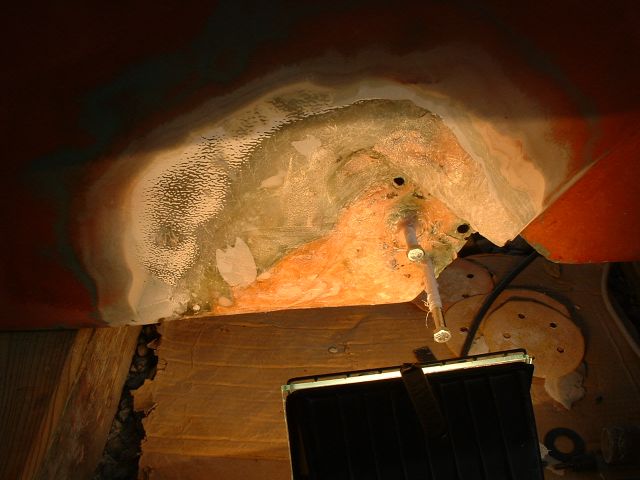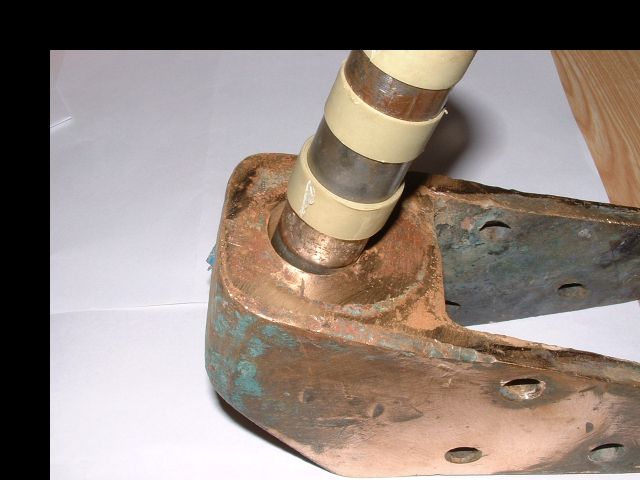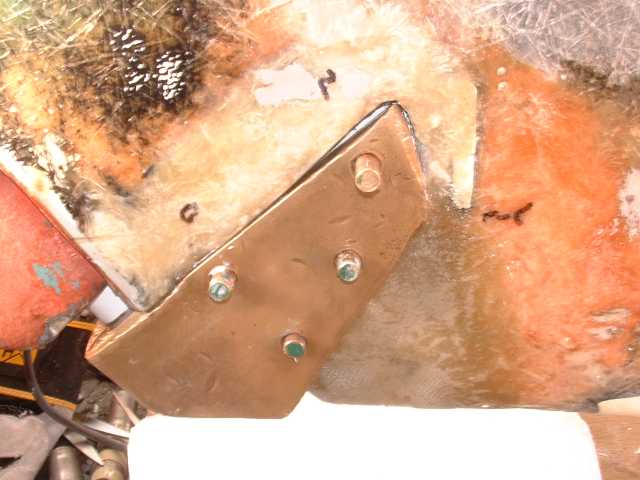
Rudder project |
| Home | Dinghy | Rudder support | Engine Control Pannel |
| I made some cuts and peeled away the glass and filler that covered the shoe. |
 |
| With the pins removed and then the shoe removed it looks like this. There was some punky glass around one of the pins so I had to grind it out to re-build solid laminate. |
 |
| After grinding out the sharp edges to form a smooth surface that tapers out nicely, wrap a pin of correct size in plumbers tape (teflon), fill the cleaned out hole with a mixture of milled fiber and resin and insert the teflon coated pin to form the hole. |
 |
| The lowest area got about 25 layers of thin glass cloth, the higher areas just two. Further glassing might be necessary. |
 |
| The reason for removing the shoe is the loose pin. The folks at Spartan claim that this pin was, at one point, press fit in the shoe. I sort of doubt that. The tape wrapped around the pin was to rough size the amount of wear in the liner of the rudder. |
 |
| Here a larger pin was made, sized to fit in the rudder with a little play and a light press in the shoe. The shoe was opened up to be a cylinder. The shoe is sand blasted and coated with epoxy |
 |
| After the fit of the pin was checked in the rudder, the pin was pressed into the shoe. |
 |
| The keel was built up with glass to form a reasonably snug fit to the shoe. The pintle was wrapped in a layer of plumbers teflon tape to provide a release surface in the event that some epoxy found it's way up there during the mounting. A layer of sealer was placed between the shoe and keel and bronze pins were inserted. |
 |
| the pins were peened into the chamfered holes and ground flush. Next comes the glassing in the keel around the shoe. A snug glassing in can provide for a great deal of support so there is redundancy with the pins. |
 |
| Layers of glass added in an ever expanding pattern to fill the deepest part first. After an initial round, some sanding was done to smooth and another round of glassing brought it to this point. |
 |
| Next came the fairing compound, in this case West system epoxy and microlight. A little sanding to smooth. |
 |
| Five layers of barrier coat (west system again) and a little sanding. Why barrier coat epoxy laminate? Well I had to barrier coat the polyester around the edges, and it was just easier to do the whole thing rather than doing just the edges. |
 |
| Two layers of copper powder and epoxy mix to (hopefully) prevent barnacles if the paint is worn off. Again, a little sanding. |
 |
| The marker coat of paint. Two coats of Red followed this. Phew, this was a big job. The rudder is no longer loose at all. The motion is smooth and does not bind. |
 |